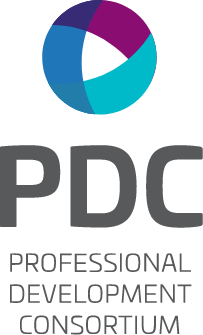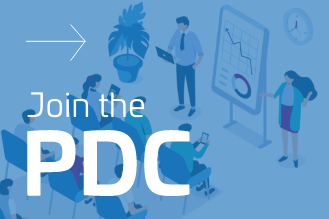You are here
Inverting Leadership Paradigms: a Pathway to Radically Increase Motivation and Engagement from Your Team
November 4, 2024
Author: Jarrett Green
Well-Being, Stress Resilency, & Peak Performance
NKB Consultancy
Lecturer in Law at USC Law School
Most leadership norms that exist within law firms today, particularly at the attorney level, are based on a long-outdated, hierarchical style where the leader wields authority over their subordinates and communicates directives in a top-down manner (i.e., the “Command and Control” model of leadership, as it is labeled in leadership philosophy). Countless scientific studies have emerged over the last couple of decades revealing that this leadership style stifles employees’ intrinsic motivation, engagement and performance quality by relegating employees to a position of mere “obedience,” yet many law firm partners continue to blindly apply this antiquated model, despite undermining their own best interests in doing so.
Professional Development leaders – because they are heart-centered humans who are dedicated to adopting science-backed leadership practices – tend to break from the “Command and Control” model when leading their own teams, but they are still forced to operate within paradigms and norms that arose under that flawed model. Sometimes it can be hard to even notice when those deeply-ingrained paradigms are influencing our leadership behaviors, even if we have the best of intentions of breaking the leadership norms that have long-plagued our industry. In those instances, we are unwittingly limiting our employees’ intrinsic motivation and engagement – notwithstanding our noble intentions.
In this blog, I would like to offer an approach for radically increasing your employees’[1] intrinsic motivation and engagement: inverting leadership paradigms. What do I mean by this? I mean you identify leadership behaviors that you (and all of us) commit reflexively and then choose to do the opposite of those behaviors (or at least consider doing the opposite). For many of those reflexive behaviors, you have never considered doing them differently. There has never been any conscious analysis or evaluation. You just do them this way because, well, everyone does them this way. That is always a red flag that a particular leadership behavior is resulting from long-existing systems and structures, rather than your own creative genius.
Although there are countless leadership behaviors (big and small) for you to consider inverting, I am going to share three examples below, in order to get your brain churning. My primary intention is to encourage you to begin consciously evaluating each of your leadership behaviors as you are about to execute them and to pause to ask yourself this transformative question before doing so: if I inverted this well-established paradigm by boldly doing the opposite, would my employees feel a surge of intrinsic motivation and engagement?
- Ask for Feedback about Your Leadership
Paradigm Inversion:
Here is an example of an existing paradigm about feedback delivery that most leaders unconsciously default to: feedback involves providing the employee with information and guidance about their performance on the recent assignment – but does not involve discussion of the leader’s role in that performance. Yet one of the quickest ways of making an employee feel engaged – and motivated to improve – is to request feedback from them about your leadership. The majority of leaders give feedback unilaterally, by telling the employee how they can improve. Great leaders give feedback collaboratively, using coaching and other modalities that include the employee’s perspectives in the process, but that collaborative process is still focused on the employee’s performance. Exceptional leaders give feedback self-referentially (in addition to referencing the employee), by asking the employee how their leadership style is contributing to or interfering with the employee’s ability to excel. Yet this behavior rarely occurs because it is so far outside the leadership paradigms that are so normal to us.
It takes a strong and secure leader to request upward feedback, particularly from employees who underperform on a project or are not living up to expectations. When an employee seems to be disregarding guidance or feedback we have provided, our ego wants to focus entirely on the employee. And the existing leadership paradigm in our industry validates this impulse. But exceptional leaders, in addition to focusing on the employee, have the ability to “turn the camera inward” by asking the employee about the leader’s communication style (and creating a safe space for the employee to honestly respond). The power of this technique is two-fold: (1) the employee shares tangible insights that the leader can now strategically implement in order to “reach” the employee in a new way (even if the leader disagrees with the insights); and (2) the employee will feel heightened motivation (and pressure) to make changes after the leader implements the insights because the ball is now firmly in the employee’s court (and the employee no longer has any excuses for disregarding otherwise valid feedback and wants to continue to incentivize the leader to seek upward feedback). By requesting and implementing upward feedback on an ongoing basis (not just through a written “upward review” issued by the firm), the leader simultaneously empowers the employee and catalyzes heightened accountability in the employee to adopt the feedback they receive.
Examples:
"As a leader, I want to make sure I am communicating instructions and guidance in the most effective way possible. I have asked you to take more initiative and be more proactive in adding value on this project, but now I would like to ask you how I can better communicate with you or support you in doing so. Is there anything I can do to differently in order to unlock your initiative?”
“Regarding some of the repeated issues/problems I’ve seen in your work over the last few weeks, perhaps the way I have communicated my feedback has been unclear or confusing to you and is therefore contributing to those issues. What are your thoughts on this?”
- Celebrate Intelligent Failures
Paradigm Inversion:
A wonderful ritual at law firms is the time-honored “celebration dinner” or “celebration happy hour” after a successful outcome is achieved. The leader brings the team together to publicly celebrate the hard-earned triumph. While this tradition should continue, an even more powerful ritual is celebrating failures. Yes, you read that correctly! When leaders only celebrate victories, whether big or small ones, they are tacitly conveying to their employees that what matters is outcomes, not processes. But as any law firm employee knows all too well, their performance on a particular project can be exquisite and nevertheless not achieve the desired outcome – to no fault of their own.
Harvard Business School professor Amy Edmondson coined the term “intelligent failure” to refer to a failure resulting from intelligent execution that advances individual learning and long-term team success but that nevertheless results in short-term failure on the project due to forces outside the employee’s control. This is in contrast to a failure resulting from carelessness or incompetence. When leaders treat intelligent failures and preventable failures alike, it is demoralizing and demotivating to employees. A powerful way to spark engagement and inspiration is to make clear to employees that the quality of their work is what is celebrated, not the ultimate outcome. Taking a formal celebratory action, even if small (such as sending a team-wide email), in response to intelligent failures is a potent paradigm shift.
Examples:
“Even though firm leadership rejected the proposal we submitted, you worked extremely hard on it and impressed me deeply with how you performed. So I’d like to celebrate the superb quality of your work and the passion you brought to this important project! How about we do a team happy hour tomorrow night? We don’t value outcomes on this team, we value process – and your process was amazing!”
“I am sending this email out to the whole team to acknowledge and celebrate Susan’s growth mindset. She bravely took on a completely new type of project and faced some setbacks along the way in liaising with some very challenging personalities, but I was inspired by how she responded to those setbacks and how she walked away with several new insights that will position her for success going forward.”
- Guide Your Employees to See Their “Weaknesses” as Flip-Sides of their Strengths
Paradigm Inversion:
All employees (and all humans) have weaknesses they have been battling with for years, if not decades. When those weaknesses inevitably manifest at times, often in the form of repeated missteps of a certain nature or ongoing struggles with particular types of projects, long-established leadership norms dictate addressing the weakness in a rather straightforward manner: identify the weakness and urge the employee to improve upon it. For example, “You didn’t comport with the technical aspect of the assignment, which is a pattern I’ve noticed at times. Going forward please place greater focus on the technical aspect of your projects because that’s a key part of overall quality.” The problem with this paradigm is that it eliminates any self-reflection and intrinsic motivation for overcoming the purported weakness. The employee is basically being told the weakness is “bad” and that the only action they can take is to eradicate it (in order to comply with the external request). Not exactly inspiring leadership.
What would inverting this paradigm look like? Well, there are many different ways of inverting this paradigm, but one inversion would be to reframe the alleged weakness from an isolated shortcoming that should be eradicated to a natural corollary of the employee’s strength that can be understood and even embraced in a new light. Most “weaknesses” we possess are not random flaws, but rather flip-sides of a larger strength. When leaders frame their employees’ “weaknesses” as potential flip-sides of their larger strengths, it motivates employees to explore – with self-honesty and self-compassion – the possible beneficial root of the purported “weakness,” and research reveals that employees are far more likely to improve their weaknesses when they view those weaknesses through this self-compassionate “whole self” lens. Of course, this holistic approach to working with “weaknesses” is outside the paradigm of our imbedded leadership structures. Which is precisely why it can bear such rich fruit.
Examples:
“Your creative and expansive thinking is one of your greatest strengths, which adds so much value to our team. I notice that you sometimes struggle to comport with the technical aspect of assignments. Do you think there’s a connection there? If so, how do think you can continue to deliver your expansive thinking on projects while also switching ‘mental gears’ to also account for the technical components of the project?”
"Sometimes it feels as if you are a bit defensive in receiving feedback. I’ve reflected on it and I am thinking that this may be related to many of your greatest strengths – which I value so much and which make you the stellar performer that you are, such as your highly analytical thinking, your passion for excellence, and your strong values and back-bone. What do you think about this theory?”
Concluding Thoughts
Hopefully these examples got your brain churning and motivated you to begin proactively identifying additional stealth leadership paradigms that you want to invert. Each inversion can be an experiment where you allow success to be your guide: if it improves the intrinsic motivation and engagement of your employee, continue using it; if it doesn’t, then cease using it. But whatever you do, do not continue defaulting to leadership paradigms simply because “we’ve always done it that way.” That, itself, is the paradigm most in need of inversion.
[1] Although I am a big fan of leaders using the term “team members,” for purposes of this blog, the term “employee” rolls off the tongue (or page?) more easily and will make for a more readable blog.


